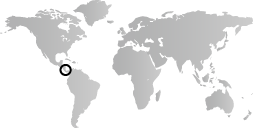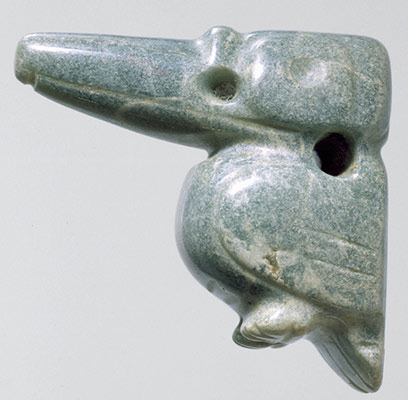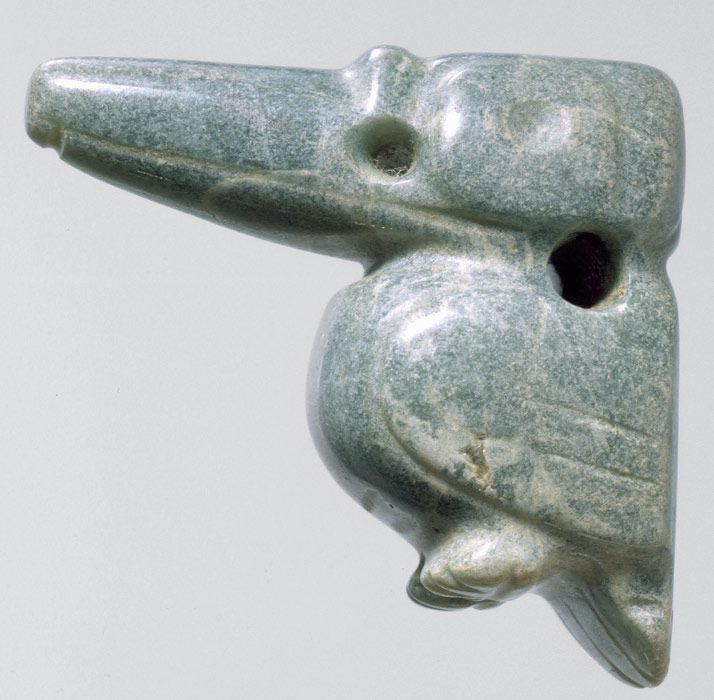Cultures in Central America develop a system of social organization in many respects distinct from the pattern seen in Mesoamerica. Geographic diversity in this area encourages broader cultural heterogeneity, most visible in varied ceramic traditions. Greenstones—including high-quality jadeite—become status markers in some areas, particularly the Greater Nicoya region of Costa Rica, after 500 B.C. Evidence in the form of reworked Olmec jades suggests some contact with cultures to the north.
Central America, 1000 B.C.–1 A.D.
Timeline
1000 B.C.
750 B.C.
750 B.C.
500 B.C.
500 B.C.
250 B.C.
250 B.C.
1 A.D.
Overview
Key Events
-
ca. 800 B.C.
The village of La Mula-Sarigua on Parita Bay in central Panama becomes a regional center. The greater presence of metates (grinding tables) and manos (grinding stones) indicates the increased availability of corn as a food crop.
-
ca. 500 B.C.
Budares (flat griddles), used in the processing of bitter manioc for food, are present at the site of La Montana in the Turrialba valley of Costa Rica.
-
ca. 500 B.C.
A jadeite pendant in the form of a celt with a bird-head top is placed in a bundle burial on the shores of the Gulf of Nicoya in Costa Rica. The bird-headed celt form will be used for pendants in northern and central Costa Rica for many centuries.
-
ca. 300 B.C.
An identifiable ceramic type, known for its distinctive, incised surface patterning, is placed in burials in Greater Nicoya, a region that encompasses southern Nicaragua and northwestern Costa Rica.
-
ca. 200 B.C.
Small villages are present in Greater Chiriquí, a region including southern Costa Rica and northern Panama.
-
ca. 100 B.C.
Semiprecious green-colored stones, frequently jadeite, are worked into personal ornaments in northern and central Costa Rica. Primarily pendants to be worn suspended about the neck, the jades are much revered and many are used as funerary offerings.
-
ca. 100 B.C.
The population of Costa Rica’s Central Highlands and Atlantic Watershed increases. Mortuary offerings include carefully sculpted stone objects.
Citation
“Central America, 1000 B.C.–1 A.D.” In Heilbrunn Timeline of Art History. New York: The Metropolitan Museum of Art, 2000–. http://www.metmuseum.org/toah/ht/?period=04®ion=cac (October 2000)
Related
Map

Primary Chronology
Secondary Chronology
See also
Keywords
- Americas
- Atlantic Watershed Art
- The Caribbean
- Central America
- Chiriqui Art
- Costa Rica
- Guanacaste-Nicoya Art
- Mesoamerican Art
- Mexico
- Panama
- Precolumbian Art
- Puerto Rico
- 10th Century B.C.
- 9th Century B.C.
- 8th Century B.C.
- 7th Century B.C.
- 6th Century B.C.
- 5th Century B.C.
- 4th Century B.C.
- 3rd Century B.C.
- 2nd Century B.C.
- 1st Century B.C.

